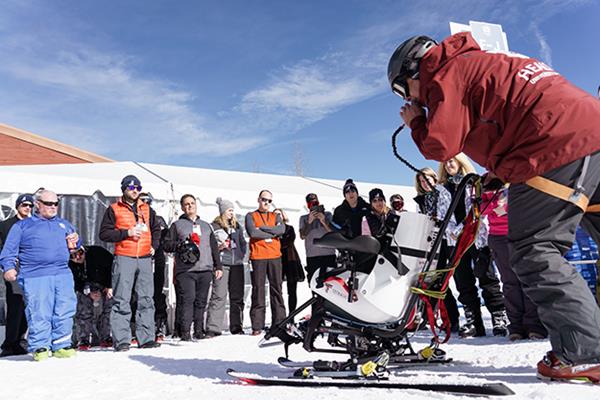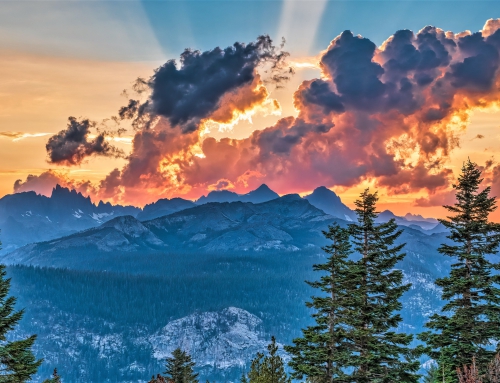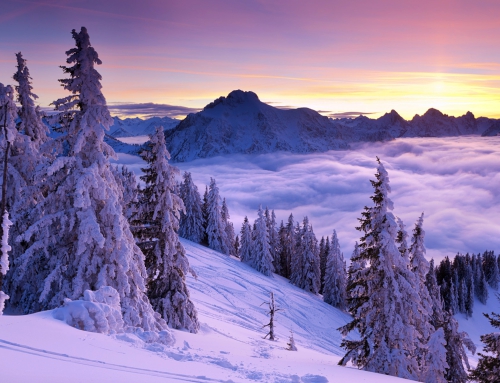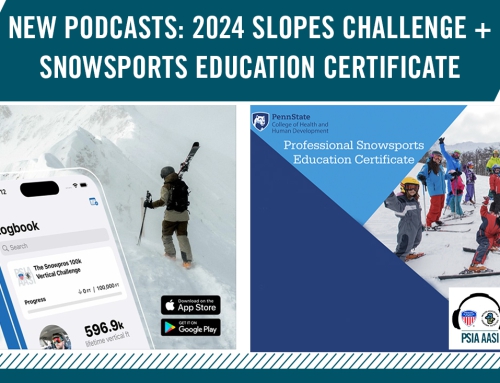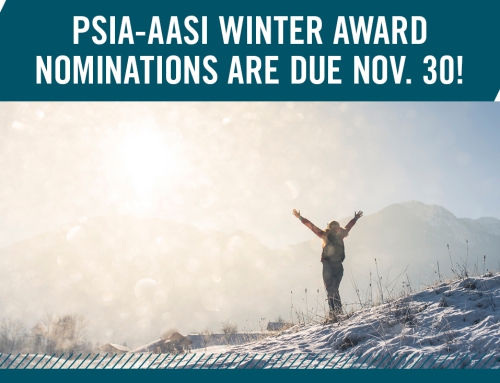Top Takeaways from National Adaptive Academy
The 32nd annual Hartford Ski Spectacular took place December 9-15, 2019, in Breckenridge, Colorado. This event, hosted by Disabled Sports USA and held in conjunction with PSIA-AASI’s National Adaptive Academy, is the nation’s premier adaptive winter sports festival.
Rocky Mountain Adaptive Alpine Committee Chair Beth Fox’s Top Takeaways:
- The TetraSki Workshop to qualify more instructors to teach using this innovative sit-ski that allows people with quadriplegia to ski more independently and take charge of their turns and speed.
- Use of the Soundscape app in nordic skiing to allow greater independence in skiers with low or no vision. The system uses 3D audio technology to help the skier determine where they want to ski and how to get there, decreasing dependence upon a sighted guide.
- Twenty instructors received scholarships through a veterans program funding their attendance at Adaptive Academy, which will allow them to take new skills back to their snowsports programs and schools to serve military veterans with disabilities.
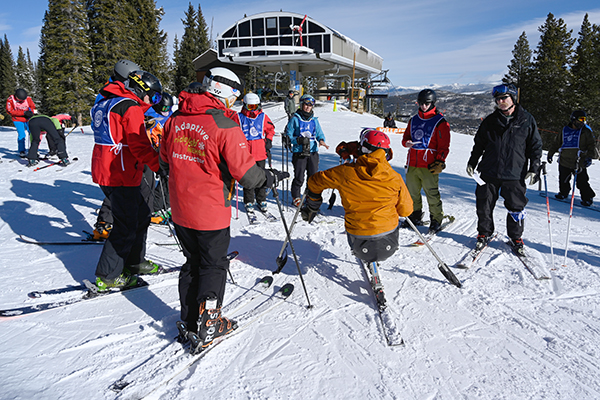
Second day of the Hartford Ski Spectacular for Disabled Sports USA. Morning lessons on the mountain, including with Matthew Brewer.
(Photo by Reed Hoffmann on 12/10/19)
PSIA-AASI Adaptive Team Coach Geoff Krill’s Top Takeaways:
- The highlight for me is always the thirst for knowledge from those who come every year to keep up with the rapidly-changing technology of equipment so they know how to interact with that equipment to get people sliding.
- Independence and finding a basic foundation in the Alpine and Snowboard Fundamentals were at the forefront of instructors’ minds. I enjoyed the enthusiasm they had for this simplified approach to adaptive equipment and how to teach.
- The equipment that stood out was the exoskeleton that helps support the legs and provides endurance and stability. This was equivalent to the e-bike for skiing. And for visually-impaired cross country skiers, a pinging system was introduced to be able to set a course and allow skiers to know where they are in the layout.
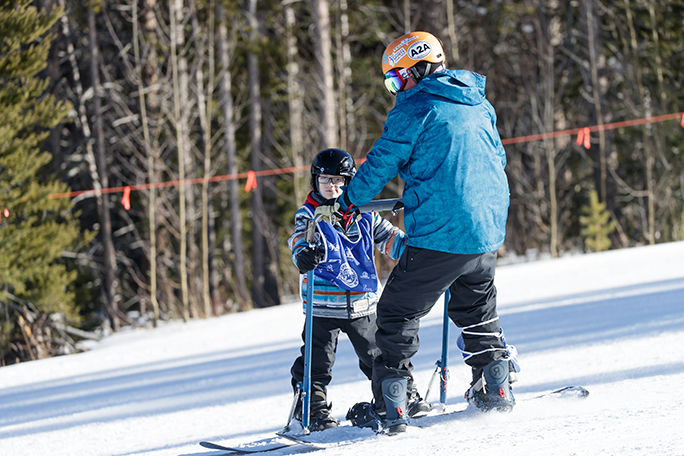
Adaptive Team member Joshua Spoelstra’s Top Takeaways:
- The big takeaway for me was the growth in the number of instructors. Twelve years ago, on my first trip to the Adaptive Academy, I was introducing adaptive snowboarding to wide-eyes and dropped jaws. That year, 90 percent of my participants were skiers and had no clue adaptive snowboarding existed.
- This year, almost all of my participants have been adaptive snowboard instructors for 1-5 years, and are looking to further develop their skills and take those skills to their guests. We are at a whole other level now, and the progress of our adaptive snowboarders, instructors, and education is astounding!
Help support continued growth for the wonderful world of adaptive snowsports instructors, by improving your own instruction skills, and letting other instructors know the valuable resources available to them, such as the Adaptive Alpine Technical Manual and the Adaptive Instruction Supplement: Diagnoses and Medication Classifications.
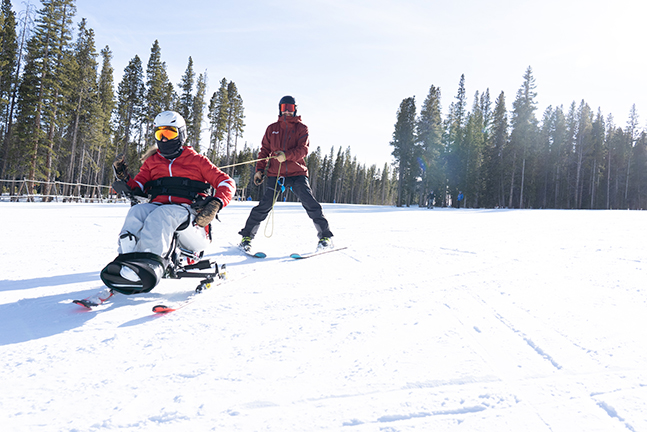
Photos courtesy of Disabled Sports USA

